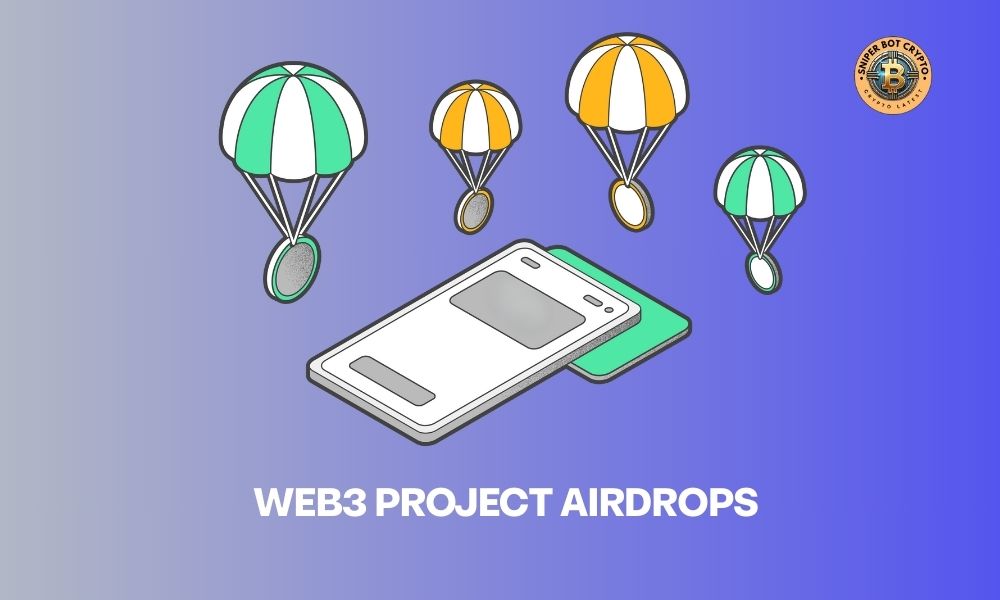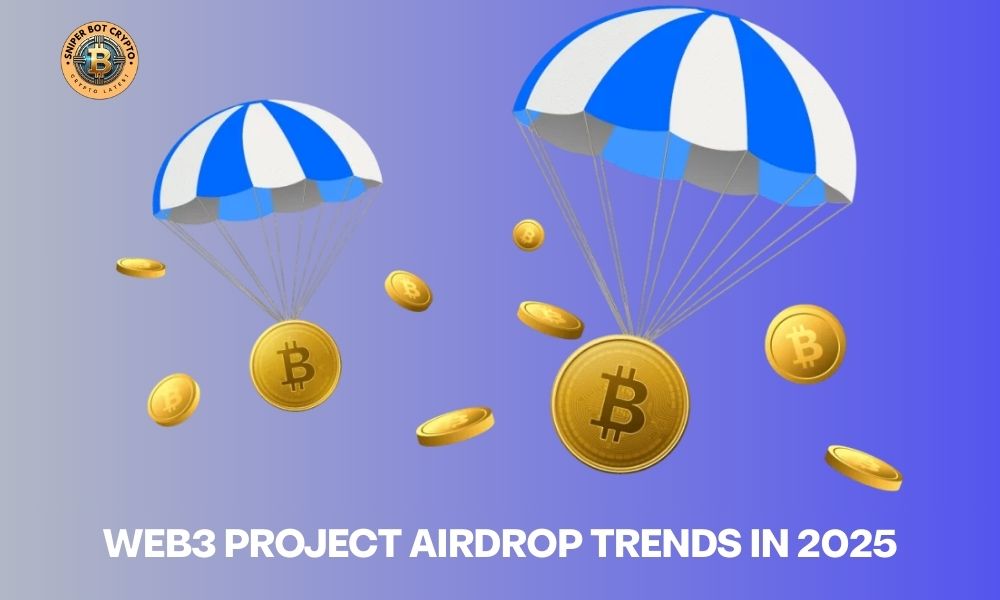Web3 project airdrops are gaining momentum as one of the most thrilling opportunities in the crypto space. These airdrops offer a unique chance for investors and enthusiasts to receive free tokens from promising Web3 projects, giving them early access to groundbreaking innovations. In this article, we highlight the top airdrops you definitely don’t want to miss. Stay ahead of the curve and unlock the potential of Web3 today.
Contents
What are web3 project airdrops? How do they work?

Web3 project airdrops are one of the popular methods used by projects in the Web3 space to distribute their tokens to the community. Simply put, an airdrop is the process by which a project distributes free tokens or coins to participants, with the aim of growing the community, raising awareness about the project, or attracting attention from investors. These tokens often have value and can be traded on cryptocurrency exchanges, providing an opportunity for recipients to make a profit right after receiving the tokens.
The mechanism of web3 project airdrops is simple and easy to participate in. Projects will announce an airdrop campaign and require participants to complete certain tasks, such as following on social media platforms (Twitter, Telegram, Discord), joining the project’s community group, or simply registering their wallet address to receive tokens. Some projects may also require participants to hold their tokens for a certain period to ensure that they not only receive the tokens but also retain them for the long term. Once the airdrop process is complete, the tokens will be directly transferred to the participants’ wallets and they can trade or use them depending on their purpose.
Popular web3 project airdrop types in 2025
Web3 projects are continuing to evolve in 2025 and web3 project airdrops remain one of the most exciting ways to engage users and expand a project’s community. These airdrops not only reward early supporters but also attract new users to decentralized ecosystems. Let’s dive into the most common airdrop types you can expect this year.
Standard airdrops
Standard airdrops are one of the simplest and most widely used methods of distributing tokens in web3 project airdrops. In this type of airdrop, users are required to perform simple actions like registering an email address or following the project’s social media accounts (Twitter, Telegram, etc.). These straightforward tasks help boost the project’s visibility, attract new users, and increase brand awareness. The major advantage of standard airdrops is their ability to quickly expand a project’s reach, creating an initial buzz and building a larger community.
Bounty airdrops
Bounty airdrops require users to complete specific tasks or challenges in exchange for tokens. These tasks can range from writing articles, creating content, or even designing memes that promote the project. For example, a DeFi project might reward users with tokens for contributing educational content. Bounty airdrops are a great way for projects to incentivize community engagement and content creation, allowing them to harness the creative efforts of users while rewarding active participation. The advantage of this method is that it encourages involvement and drives the project’s exposure in a more organic way.
Holder airdrops
Holder airdrops are distributed to users who hold a specific cryptocurrency (such as ETH, SOL, or other major tokens) in their wallets at the time of the snapshot. This method is often used by web3 project airdrops to reward loyal users who have supported the blockchain or ecosystem. The distribution is typically proportional to the amount of the specific coin that the user holds. For example, if a user holds 1% of a certain cryptocurrency at the time of the snapshot, they will receive 1% of the total airdrop tokens. Holder airdrops are a way for projects to incentivize long term holding and reward users who have supported the project.
Retroactive airdrops
Retroactive airdrops reward users who have interacted with a protocol or platform before the token was officially launched. This type of airdrop is aimed at recognizing early supporters and users who have helped build the ecosystem or contribute to its success. Retroactive airdrops are often seen as a way to reward user loyalty and encourage further engagement, especially with projects that have already gained momentum. These airdrops are often highly anticipated, as they provide a chance for users to benefit from their early involvement with the project, even before the token launch.
How to effectively claim web3 project airdrops
As the Web3 ecosystem grows, claiming web3 project airdrops has become an essential part of staying engaged and receiving valuable tokens. However, the process is not always as simple as just registering your email. To effectively claim airdrops and ensure you are eligible for the best opportunities, you need to take a strategic approach. Below are some key steps to help you maximize your chances of receiving airdrops from promising Web3 projects.
- Set up a dedicated hot wallet: To qualify for Web3 project, use a dedicated hot wallet like MetaMask or Phantom, not an exchange wallet. Decentralized wallets ensure your address is eligible for airdrops, especially those that use wallet snapshots.
- Interact with non-token protocols: Boost your chances by engaging with dApps that haven’t released tokens yet. Completing 5-10 transactions increases your likelihood of qualifying for future airdrops.
- Join discord communities: Active participation in Discord communities can earn you airdrops. Engage with discussions, report bugs, and contribute to the project to increase your chances of being rewarded.
- Follow reliable information Channels: Stay updated on web3 project airdrops by following official social media channels, newsletters and trusted influencers to ensure you never miss an opportunity.
Web3 project airdrop trends in 2025

In 2025, the trend of web3 project airdrops is evolving to become more sophisticated and interactive, incorporating new technologies and strategies. One emerging trend is the integration of Soulbound Tokens (SBTs), non-transferable tokens used as proof of participation in a community. These tokens help verify identity and make it easier to claim airdrops across multiple chains, thus simplifying the process for users. SBTs are quickly becoming a powerful tool in Web3, as they not only enhance security but also encourage genuine participation within decentralized ecosystems.
Another exciting development is gamified airdrops, which integrate gaming mechanics to engage users more deeply. This trend combines the thrill of gaming with the potential for earning valuable assets. For example, users may be required to complete quests within the metaverse or interact with certain gaming protocols to unlock NFT voucher airdrops. By adding a playful element, projects can create a more interactive and fun way for users to earn tokens, making the process feel less transactional and more engaging.
Lastly, web3 project airdrops are gaining traction, allowing projects to distribute tokens across multiple blockchains such as Ethereum, Solana and Cosmos simultaneously. This approach expands the reach of airdrops, ensuring that users from various ecosystems can participate and benefit from the distribution. By leveraging the strengths of different blockchains, projects are not only increasing their user base but also promoting the interoperability of decentralized networks. At Sniper Bot Crypto, we stay on top of the latest trends and provide you with the best opportunities to navigate this exciting space.
